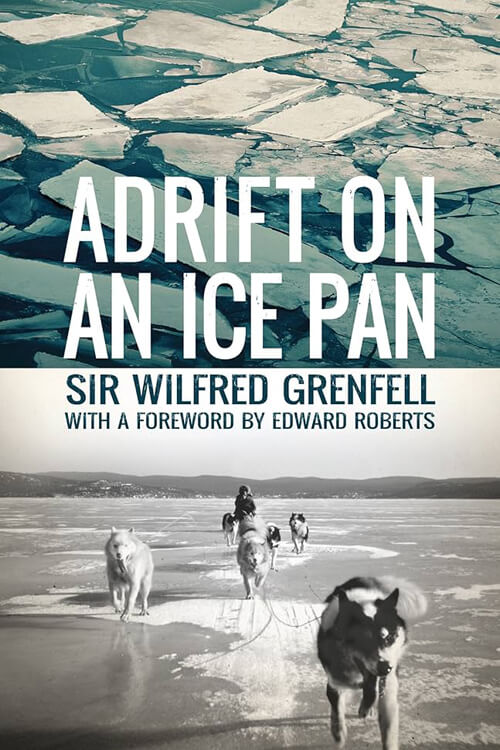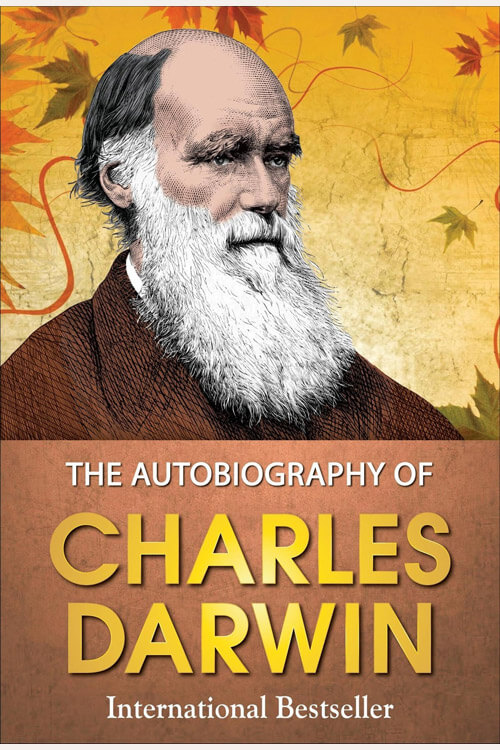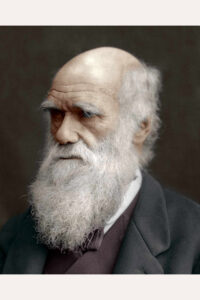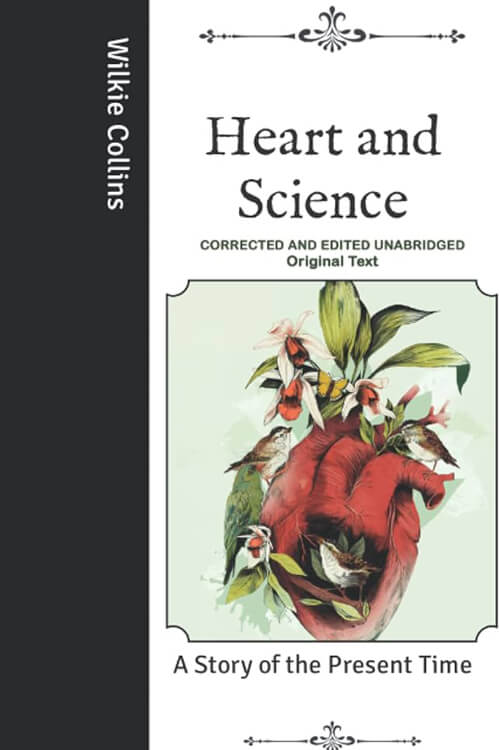
The Autobiography of Charles Darwin
The Autobiography of Charles Darwin is an autobiography by the English naturalist Charles Darwin. Darwin wrote the text for his family, which he entitled Recollections of the Development of my Mind and Character. He states that he started writing it on about May 28, 1876, and had finished it by August 3. John Murray published The text in 1887 (five years after Darwin’s death) as part of The Life and Letters of Charles Darwin, including an autobiographical chapter.
The text in Life and Letters was edited by Darwin’s son, Francis Darwin, who removed several passages about Darwin’s critical views of God and Christianity. The omitted passages were later restored by Darwin’s granddaughter Nora Barlow in a 1958 edition to commemorate the 100th anniversary of the publication of The Origin of Species. This edition was published in London by Collins under the title of The Autobiography of Charles Darwin 1809-1882. With the original omissions restored. Edited and with appendix and notes by his granddaughter Nora Barlow.
Read or download Book
Charles Darwin
Darwin was born in Shrewsbury, Shropshire, on 12 February 1809, at his family’s home, The Mount.
Biography
He was the fifth of six children of wealthy society doctor and financier Robert Darwin and Susannah Darwin (née Wedgwood). His grandfathers, Erasmus Darwin and Josiah Wedgwood, were both prominent abolitionists. Erasmus Darwin praised general concepts of evolution and common descent in his Zoonomia (1794), a poetic fantasy of gradual creation, including undeveloped ideas anticipating concepts his grandson expanded. Both families were largely Unitarian, though the Wedgwoods were adopting Anglicanism. Robert Darwin, a freethinker, had baby Charles baptized in November 1809 in the Anglican St Chad’s Church, Shrewsbury, but Charles and his siblings attended the local Unitarian Church with their mother. The eight-year-old Charles already had a taste for natural history and collecting when he joined the day school run by its preacher in 1817. That July, his mother died.
From September 1818, he joined his older brother Erasmus in attending the nearby Anglican Shrewsbury School as a boarder. Darwin spent the summer of 1825 as an apprentice doctor, helping his father treat the poor of Shropshire, before going to the well-regarded University of Edinburgh Medical School with his brother Erasmus in October 1825. Darwin found lectures dull and surgery distressing, so he neglected his studies. He learned taxidermy in around 40 daily hour-long sessions from John Edmonstone, a freed black slave who had accompanied Charles Waterton in the South American rainforest. In Darwin’s second year at the university, he joined the Plinian Society, a student natural history group featuring lively debates in which radical democratic students with materialistic views challenged orthodox religious concepts of science. He assisted Robert Edmond Grant’s investigations of the anatomy and life cycle of marine invertebrates in the Firth of Forth and, on 27 March 1827, presented at the Plinian his discovery that black spores found in oyster shells were the eggs of a skate leech.
One day, Grant praised Lamarck’s evolutionary ideas. Darwin was astonished by Grant’s audacity but had recently read similar ideas in his grandfather Erasmus’ journals. Darwin was rather bored by Robert Jameson’s natural history course, which covered geology—including the debate between Neptunism and Plutonism. He learned the classification of plants and assisted with work on the collections of the University Museum, one of the largest museums in Europe at the time. Darwin’s neglect of medical studies annoyed his father, who sent him to Christ’s College, Cambridge, in January 1828 to study for a Bachelor of Arts degree as the first step towards becoming an Anglican country parson. Darwin was unqualified for Cambridge’s Tripos exams and was required to join the ordinary degree course instead. He preferred riding and shooting to studying. During the first few months of Darwin’s enrolment at Christ’s College, his second cousin, William Darwin Fox, was still studying there. Fox impressed him with his butterfly collection, introducing Darwin to entomology and influencing him to pursue beetle collecting. He did this zealously and published some of his finds in James Francis Stephens’ Illustrations of British Entomology (1829–32). Through Fox, Darwin became a close friend and follower of botany professor John Stevens Henslow. He met other leading parson-naturalists who saw scientific work as religious natural theology, becoming known to these dons as “the man who walks with Henslow”. When his exams drew near, Darwin applied himself to his studies and was delighted by the language and logic of William Paley’s Evidences of Christianity (1795).
Darwin did well in his final examination in January 1831, coming tenth out of 178 candidates for the ordinary degree. Darwin had to stay at Cambridge until June 1831. He studied Paley’s Natural Theology or Evidences of the Existence and Attributes of the Deity (first published in 1802), which argued for divine design in nature, explaining adaptation as God acting through laws of nature. He read John Herschel’s new book, Preliminary Discourse on the Study of Natural Philosophy (1831), which described the highest aim of natural philosophy as understanding such laws through inductive reasoning based on observation, and Alexander von Humboldt’s Personal Narrative of Scientific Travels in 1799–1804. Inspired by “a burning zeal” to contribute, Darwin planned to visit Tenerife with some classmates after graduation to study natural history in the tropics. In preparation, he joined Adam Sedgwick’s geology course, then, on 4 August, travelled with him to spend a fortnight mapping strata in Wales.





